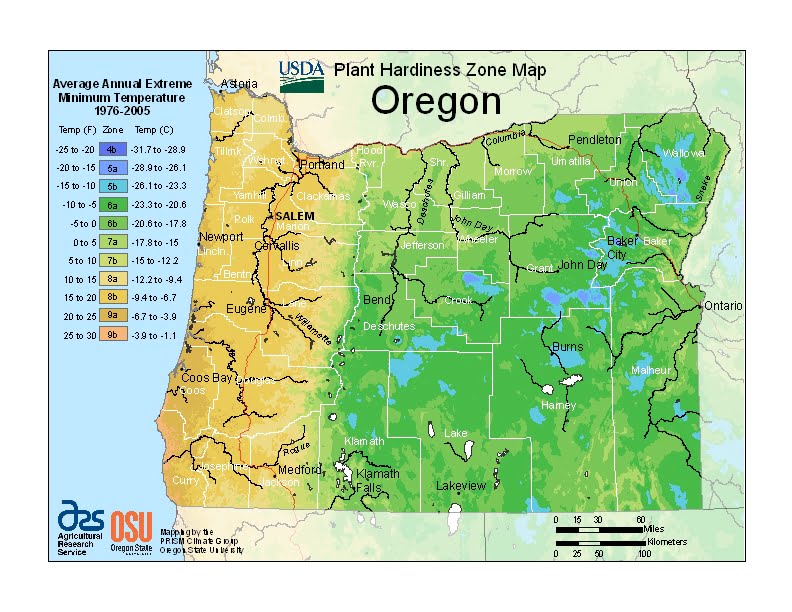
Oregon has a generally mild climate, though there is significant variation given the variety of landscapes across the state, ranging from USDA Plant Hardiness Zones 4b through 9b. Oregon’s climate varies widely per different areas of the state so get to know which zone your city is located in so that you can address and avoid potential issues before they become problematic.
The USDA zones map is a useful system for determining what plants will survive and grow in certain areas ofOregon.
Understanding how these hardiness zones work means you can choose the right planting time, and optimize growing for your climate.
The state’s western region (west of the Cascade Range) has an oceanic climate, populated by dense evergreen mixed forests.
Western Oregon’s climate is heavily influenced by the Pacific Ocean; the western third of Oregon is very wet in the winter, moderately to very wet during the spring and fall, and dry during the summer.
The relative humidity of Western Oregon is high except during summer days, which are semi-dry to semi-humid; Eastern Oregon typically sees low humidity year-round.
The state’s southwestern portion, particularly the Rogue Valley, has a Mediterranean climate with drier and sunnier winters and hotter summers, similar to Northern California.